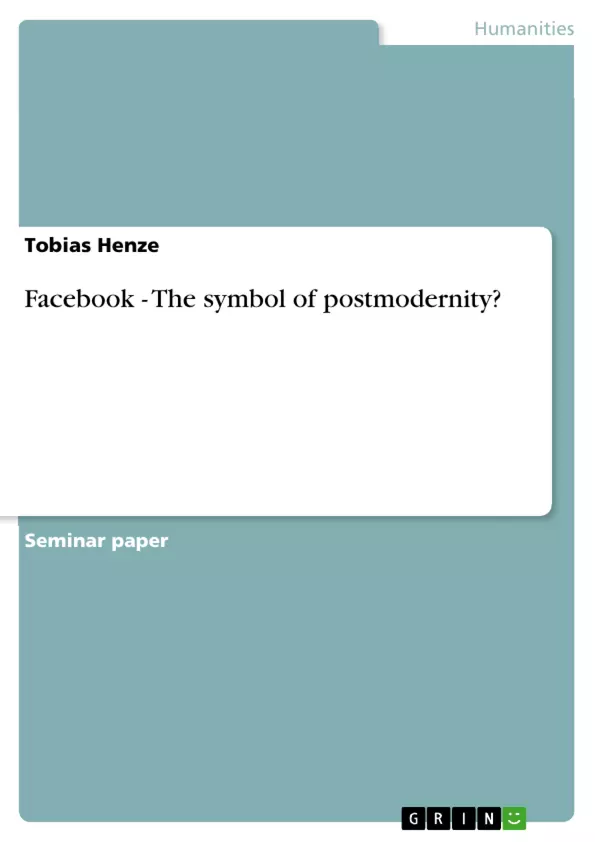It is the “world’s largest social network” (Stross, 2010) connecting over 600 million users from more than 200 countries on an Internet page that was founded just 7 years ago (Socialbakers, 2011a). The founder, Mark Zuckerberg, was named “person of the year 2010” (Grossman, 2010) by Time magazine and is ranked number 40 on Forbes’ list of the world’s most powerful people with a net worth of approximately $13.5 billion (Forbes, 2011). Facebook, the social network this paper is dealing with, has become part of the daily routine of many users sometimes influencing their purchase decisions or even the way they perceive and see the world. Moreover, it has become an Internet brand which can now be regarded to be on an equal level with Amazon, eBay or Google. Without doubt, Facebook has to be regarded as an important feature of growing inter-connectivity which was made possible through the rise and spread of the Internet. The social network enables people to get in touch with each other, find so-called “friends” all over the world and to create a personal profile representing the user within the Facebook network. Facebook’s self-stated mission is “to give people the power to share and make the world more open and connected” (Facebook, 2011). Of course this ‘mission’ is not a revolutionary new idea in the World Wide Web as several social networks and micro blogging websites like MySpace, LinkedIn or Twitter show. Still Facebook is the most widely-known, preferred and fastest growing social network of today’s world. As a matter of fact it is also often claimed to be the most “influential social network” (Brennan & Schafer, 2010, p. 19) of our times.
Inhaltsverzeichnis (Table of Contents)
- Introduction
- Facebook & Harvey's concept of the 'time-space compression'
- Facebook & the formation of identity and lifestyle
- Facebook & multiple identities
- Facebook & the perception of ‘the other’
- Conclusion
Zielsetzung und Themenschwerpunkte (Objectives and Key Themes)
This paper aims to analyze Facebook in the context of postmodern developments and their impact on our identity and lifestyles. By examining Facebook's features and functionalities, the paper seeks to determine whether it has become a symbol of postmodernity. The analysis will explore how Facebook connects users globally and integrates concepts of identification, using real-world examples to illustrate the application of theoretical concepts.
- Harvey's 'time-space compression' and its influence on Facebook
- The formation of identity and lifestyle in the context of Facebook
- The concept of multiple identities within the Facebook environment
- The perception of 'the other' through the lens of Facebook
- Facebook as a symbol of postmodernity
Zusammenfassung der Kapitel (Chapter Summaries)
The introduction highlights the significance of Facebook as a social network, emphasizing its global reach and influence on user behavior. It introduces the concept of postmodernity and its relevance to the analysis of Facebook.
The first chapter examines Harvey's concept of 'time-space compression' and its application to Facebook. It explores how Facebook facilitates global communication and connectivity, emphasizing the accelerated pace of interaction enabled by the platform.
The second chapter delves into the relationship between Facebook and the formation of identity and lifestyle. It discusses how users construct and present their identities online, exploring the influence of Facebook on individual perceptions of self and social interaction.
The third chapter focuses on the concept of multiple identities within the Facebook environment. It examines how users navigate different social roles and identities within the platform, exploring the possibilities of presenting distinct aspects of self online.
Schlüsselwörter (Keywords)
The main keywords and focus topics of the paper include: Facebook, postmodernity, time-space compression, identity, lifestyle, multiple identities, perception of 'the other', social networking, global village, connectivity.
- Arbeit zitieren
- Tobias Henze (Autor:in), 2011, Facebook - The symbol of postmodernity?, München, GRIN Verlag, https://www.hausarbeiten.de/document/211204



